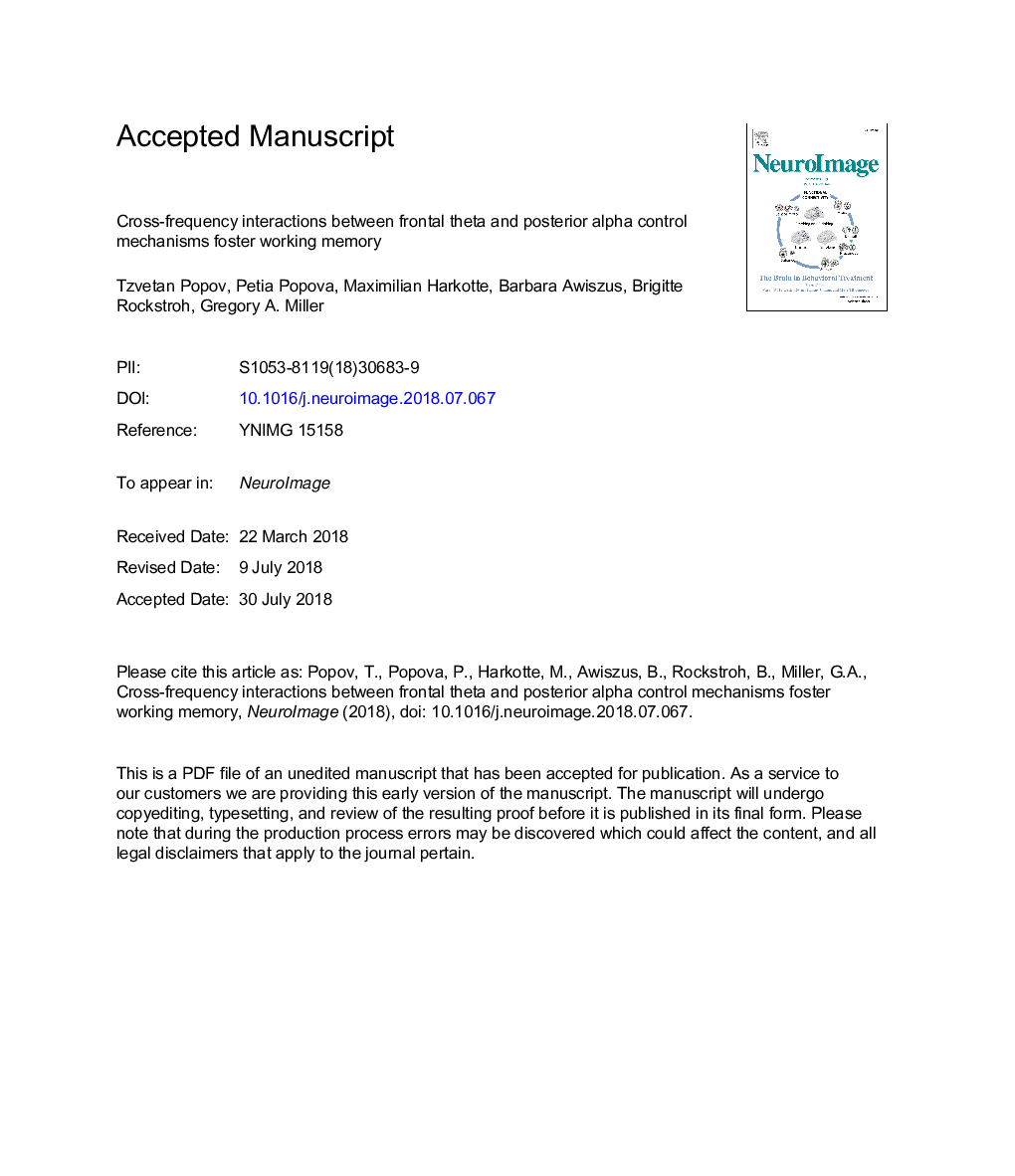| Article ID | Journal | Published Year | Pages | File Type |
|---|---|---|---|---|
| 8686673 | NeuroImage | 2018 | 24 Pages |
Abstract
Neural oscillatory activity in the theta (4-8â¯Hz) and alpha (8-14â¯Hz) bands has been associated with the implementation of executive function, with theta in midline frontal cortex and alpha in posterior parietal cortex related to working memory (WM) load. To identify how these spatially and spectrally distinct neural phenomena interact within a large-scale fronto-parietal network organized in service of WM, EEG was recorded while subjects performed an N-back WM task. Frontal theta power increase, paralleled by posterior alpha decrease, tracked participants' successful WM performance. These power fluctuations were inversely related both across and within trials and predicted reaction time, suggesting a functionally important communication channel within the fronto-parietal network. Granger causality analysis revealed directed parietal to frontal communication via alpha and frontal to parietal communication via theta. Results encourage consideration of these bidirectional, power-to-power, cross-frequency control mechanisms as an important feature of cerebral network organization supporting executive function.
Related Topics
Life Sciences
Neuroscience
Cognitive Neuroscience
Authors
Tzvetan Popov, Petia Popova, Maximilian Harkotte, Barbara Awiszus, Brigitte Rockstroh, Gregory A. Miller,
